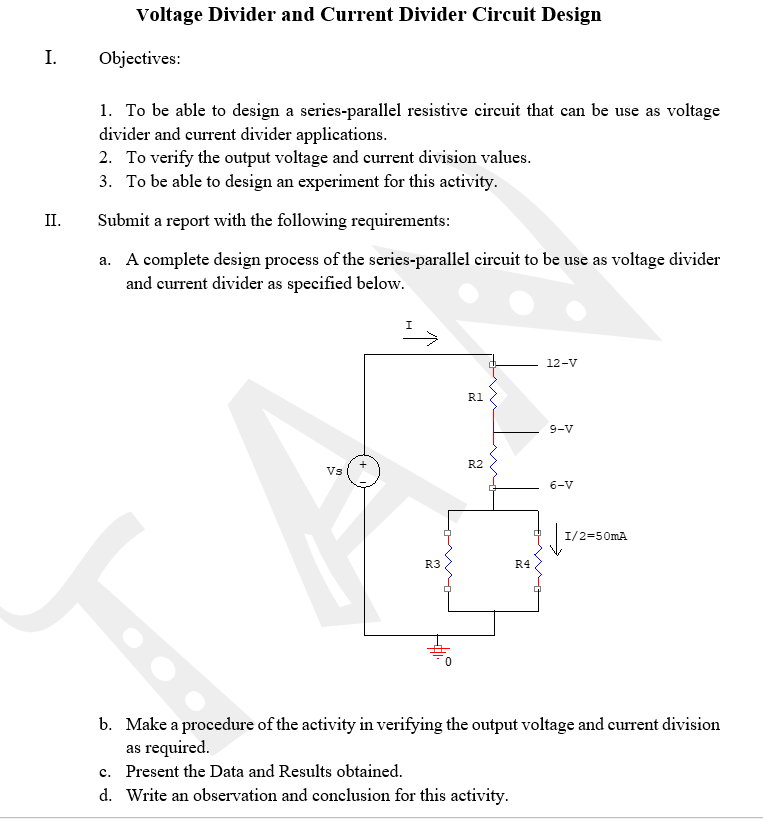Lab 3 Loading Effect of Voltage Divider Circuit Circuit Diagram The most basic and commonly used voltage divider circuit is that of two fixed-value series resistors, but a potentiometer or rheostat can also be used for voltage division by simply adjusting its wiper position. A very common application of a voltage divider circuit is to replace one of the fixed-value resistors with a sensor.

A voltage divider is a simple yet powerful circuit that reduces a higher voltage to a lower one using two resistors. It is commonly used to reduce the voltage for devices that require lower operating voltages, such as sensors or microcontrollers. The output voltage of a voltage divider can be calculated using the voltage divider equation: Where: In this video, I am talking about what is a voltage divider, how it works, and how to use it as a voltage sensor.Join this channel to support me or to get ac Key learnings: Voltage Divider Definition: A voltage divider is a simple circuit that creates a part of its input voltage as output, using two resistors in series.; Circuit Components: The circuit includes two resistors connected in series with a voltage source, splitting the input voltage.; Unloaded Equation: With no current flowing out, the output voltage depends on the ratio of the resistors.

How Voltage Divider Circuit Works Circuit Diagram
Ideal Voltage Divider There are two important parts to the voltage divider: the circuit and the equation. The Circuit A voltage divider involves applying a voltage source across a series of two resistors. You may see it drawn a few different ways, but they should always essentially be the same circuit. Examples of voltage divider schematics.

Figure 2: Resistive Voltage Divider Circuit. The input voltage V in is applied across the two resistors R 1 & R 2 which are connected in series. The output voltage V out is obtained between the two terminals of the resistor R 2. The voltage across this resistor will be a fraction of the input voltage V in. The formula to calculate the output of A voltage divider is a circuit that creates a smaller voltage from an input voltage by using two resistors. You'll see it in both simple and advanced circuits all the time. Here's the basic setup: For example, the thermistor is a temperature sensor. It changes its resistance based on the temperature. This is where the hero: A voltage divider comes in and saves the day acting as a level shifter which interfaces two circuits that use different operating voltages. The voltage divider can help level the voltage down from a microcontroller (eg. 5V to 3.3V) to avoid damage to the sensor which makes it safe for the sensor to handle.
